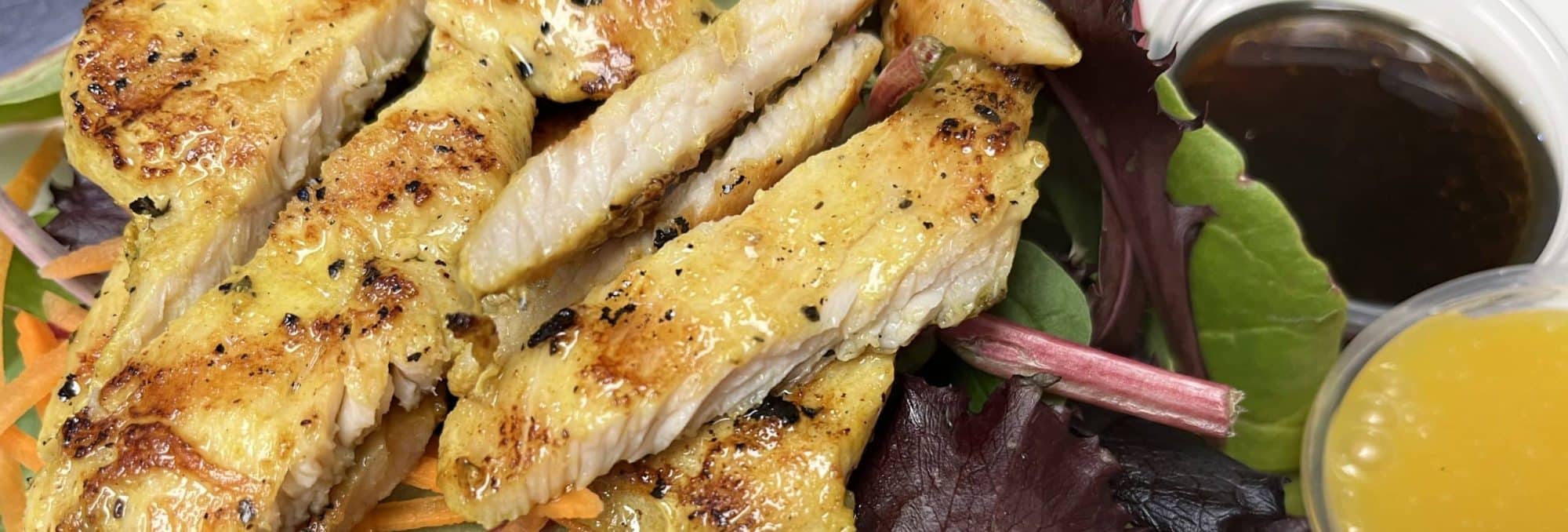Published in the St. Louis Post-Dispatch on Wednesday, August 5, 2009
Thai government brings in two chefs to teach a cooking class in St. Louis. The goal: authentic recipes in local restaurants.
By Joe Bonwich
With almost 30 Thai restaurants in the metropolitan area, Thai food can no longer be considered exotic in St. Louis. And although selections vary from restaurant to restaurant, every Thai place in town is sure to have pad Thai on its menu.
But what makes an authentic pad Thai? More than 25 local Thai chefs gathered last week at Kitchen Conservatory in Clayton for instruction by two chefs who traveled from Suan Dusit Rajabhat University in Bangkok.
The event was put on by the Royal Thai Government. And as such, it had an economic aspect to complement the push for culinary authenticity.
“We want to promote Thai products into the U.S. market,” said Kathy Saowapak, a trade officer for the ministry’s Department of Export Promotion. “We’ve done events like this for many years in Chicago, but this is the first time we’ve taken it out of state.”
Chefs Amaraporn Vongfak and Chachaya Raktakanishta brought along a pad Thai recipe developed by the university’s International Culinary School. The ingredients include palm sugar, tamarind juice, Chinese chives, pickled white radish and dried shrimp.
The pickled white radish in particular is generally not used in St. Louis restaurants, said Sue Prapaisilp of Global Foods Market in Kirkwood. The seminar was conducted in Thai, and Prapaisilp translated for a reporter.
“I think some restaurants don’t believe that American tastes would go for the radish,” Prapaislip said. “But we’ve had people who have been in our store and who have had it in Thailand, and they say they like it,” Global Foods carries a version of the preserved radishes.
She added that most local restaurants use green onions instead of chives because chives have a short shelf life.
As chef Vongfak provided commentary, Raktakanishta demonstrated proper cooking technique. one important was using the edge of the spatula when stir-frying the noodles so the noodles remain uncut. She added the dried shrimp toward the end of the recipe so that their strong flavor didn’t permeate the dish.
A banana blossom was the finishing garnish. Prapaisilp said the blossoms imported from Mexico are sometimes available, but she finds the flavor unappealing as compared with banana blossoms she’s had in Thailand.
Raktakanishta mentioned that more health-conscious versions of pad Thai had emerged in Thailand. Instead of rice noodles, some restaurants and home cooks use bean-thread noodles. Some low-carbohydrate versions of the dish contain sliced green mango and no noodles at all.
Prapaisilp noted that when traveling around the United States, she’d encountered versions of pad Thai that used broccoli and bell pepper. “They hurt the reputation of Thai food,” she said.
“And some even use ketchup,” Raktanishta said with a laugh.
Although a main goal of the seminar was to promote authentic Thai ingredients, the chefs also brought along a recipe for pladuk foo that substituted canned tuna for the more difficult-to-prepare minced catfish. This version resulted in a thin, lacy brown sheet of shredded unripe mango.
After a demonstration by the two chefs, the seminar participants were invited into the kitchen to make the recipes on their own. Technique mattered; they came up with distinctly different textures for tod man plagrai, a fish cake that was the third recipe demonstrated by the visiting chefs.
St. Louis chefs interviewed after the seminar were pleased at the opportunity and the outreach by the Thai government.
“It was a very good experience,” said Tera Booncharoenwong of Rearn Thai in Clayton.
“It’s a good chance for us to do something different with our menus.”
Kittikoon Chompupong was impressed by the tuna adaptation. “It seemed more sophisticated than catfish,” said Chompupong, who cooks at Manee Thai in Manchester.
As for the pad Thai, Chompupong loved the authenticity but wondered about the cost.
Many pad Thais here are made just with vinegar and sugar,” Chompupong said. “We rarely cook with palm sugar or tamarind sauce – the ingredients are hard to come by and cost more. It tasted great, but I’m not sure how many people will change their recipes.”
SOURCE: Sasimonthon Ongartsutthikul, owner of Thai Kitchen via a framed print of the original article.
Links:
